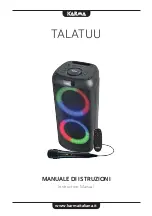
Page of 26
18
ELECTRIC SHOCK CAN KILL! To prevent ELECTRIC SHOCK, do not perform any welding
while standing, kneeling, or lying directly on the grounded workpiece.
8.1 Moving the torch
Torch travel refers to the movement of the torch along the weld joint and is broken into two elements:
Direction and Speed. A solid weld bead requires that the welding torch be moved steadily and at the
right speed along the weld joint. Moving the torch too fast, too slow, or erratically will prevent proper
fusion or create a lumpy, uneven bead.
Travel direction
is the direction the torch is moved along the weld joint in relation to the weld
puddle. The torch is either PUSHED into the weld puddle or PULLED away from the weld puddle.
For most welding jobs you will pull the torch along the weld joint to take advantage of the greater
weld puddle visibility.
Travel speed
is the rate at which the torch is being pushed or pulled along the weld joint. For a
fixed heat setting, the faster the travel speed, the lower the penetration and the lower and narrower
the finished weld bead. Likewise, the slower the travel speed, the deeper the penetration and the
higher and wider the finished weld bead.
8.2 Types of welding beads
As you become more familiar with your new welder and better at laying some simple weld beads,
you can begin to try some different weld bead types.
The STRINGER BEAD is formed by traveling with the torch in a straight line while keeping the wire
and nozzle centered over the weld joint. See following figure.
The WEAVE BEAD Used when you want to deposit metal over a wider space than would be
possible with a stringer bead. It is made by weaving from side to side while moving with the torch. It
is best to hesitate momentarily at each side before weaving back the other way.









































